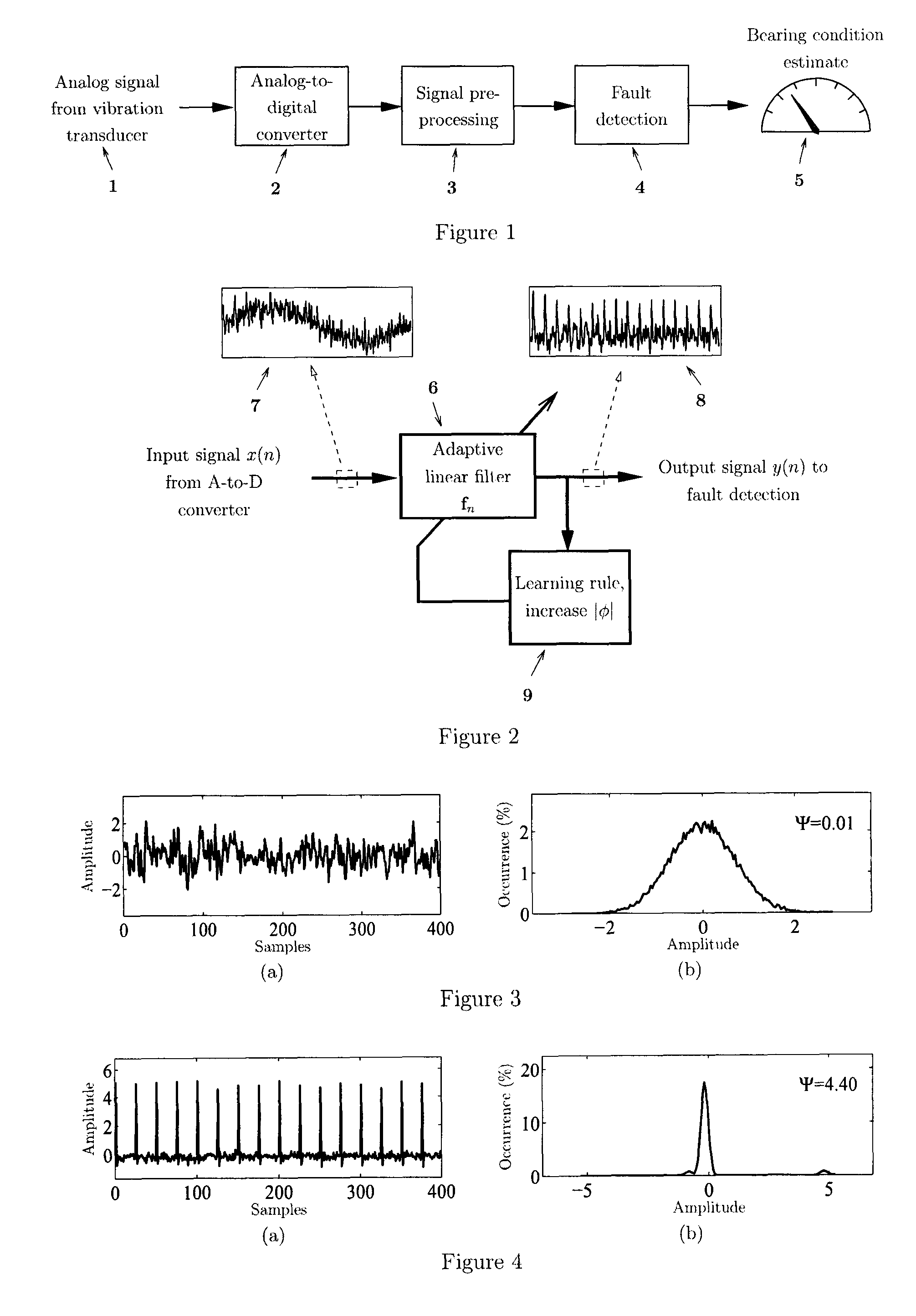Method for rolling bearing fault detection based on enhancing statistical asymmetry
- Summary
- Abstract
- Description
- Claims
- Application Information
AI Technical Summary
Benefits of technology
Problems solved by technology
Method used
Image
Examples
Embodiment Construction
[0027]An embodiment of the invention is now described in which it is assumed that a vibration signal from a rotating machine with one or several bearings is converted to electrical form using a suitable transducer, such as an piezoelectric accelerometer, and given as input to a vibration analysis process. Other possible means of supplying such an input include reading a previously measured signal from a storage media.
[0028]An overview of the steps involved in general vibration analysis is found in FIG. 1. illustrating the use of signal pre-processing followed by bearing condition assessment. The input vibration signal 1 from the transducer is first converted from analog to digital form. The sampling rate used in the analog-to-digital (A-to-D) conversion 2 must be greater than twice the highest vibration frequency of interest for the current application. The digital signal is then input to a signal preprocessing step 3 to suppress transfer-function distortion and disturbances that ac...
PUM
 Login to View More
Login to View More Abstract
Description
Claims
Application Information
 Login to View More
Login to View More - R&D
- Intellectual Property
- Life Sciences
- Materials
- Tech Scout
- Unparalleled Data Quality
- Higher Quality Content
- 60% Fewer Hallucinations
Browse by: Latest US Patents, China's latest patents, Technical Efficacy Thesaurus, Application Domain, Technology Topic, Popular Technical Reports.
© 2025 PatSnap. All rights reserved.Legal|Privacy policy|Modern Slavery Act Transparency Statement|Sitemap|About US| Contact US: help@patsnap.com



